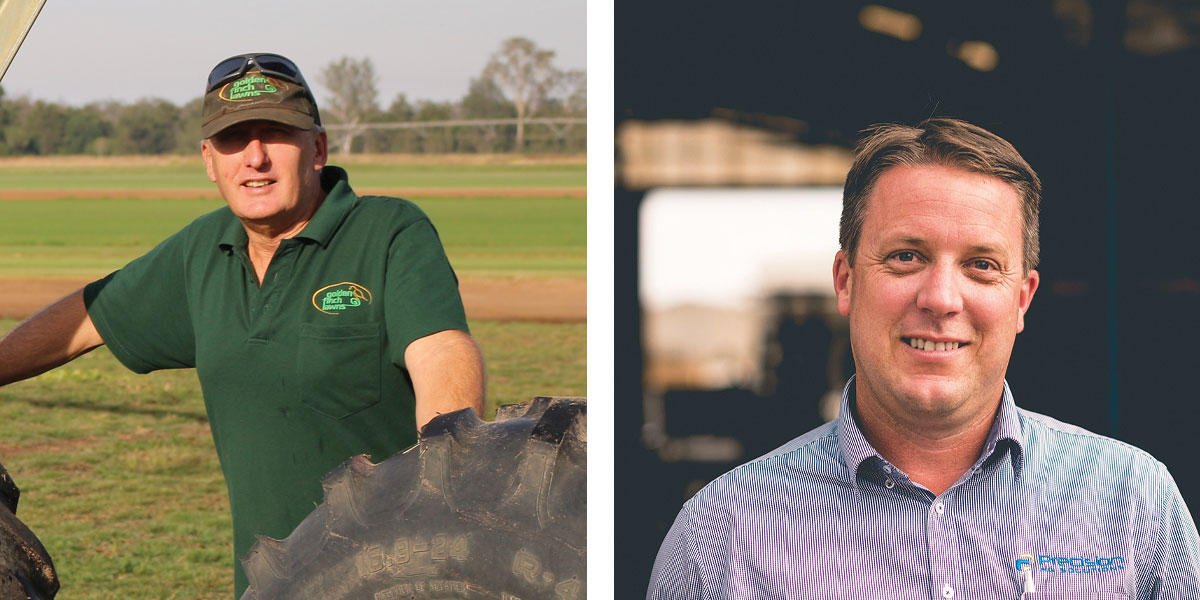The strong interest in precision agriculture means turf growers have access to more data than ever before – but they need to first collect it and collect it properly to fully reap the technology’s cost-saving benefits. Katie Fisher explains.
Precision agriculture is fast becoming a must-have in agricultural with turf growers also wanting to have a slice of the technology that is boosting cost efficiencies. But the key factor is to make sure the technology is working as effectively and efficiently as possible for growers before they purchase.
Simply put, precision agriculture is anything growers use to make their farm work more accurately. It is a farm management approach largely based on technology and data collection – where growers utilise everything from soil moisture and temperature sensors and drones to GPS soil sampling and variable rate applications with irrigation and fertilizer.
Within turf, it means optimal management of variables with in the paddock and throughout a crop cycle can be achieved. Today the easiest precision agricultural technology to adopt on a turf farm is GPS light bar guidance when applying chemicals and/or fertilisers.

Above: Left – Greg Banff and Right – Danny Weier
Greg Banff, from Golden Finch Lawns at Coominya in Queensland fully endorses the use of precision agricultural on turf farms and explains how, for him, GPS and auto-steer on his spray tractors has ensured minimal overlap of chemical and/or fertiliser applications.
“We aim to save thousands of dollars through less wastage as well as reducing the time taken and labour costs involved in applications, even when used in mowing.” Greg said.
Initially starting, like most farms, with a light bar system which is essential for driving in a circle around the pivot. The cost savings came from elimination of overlaps and misses and wedges effect on produces and time.
He then invested in a second-hand GPS auto steer system for $15,000. If it costs $100/hr and mows 150 hours, it pays for itself.
Greg also has a Variable Rate Irrigation (VRI) system on his Valley Pivot. The system is a four stand with a corner arm and when set-up with VRI means Greg can vary the application rate of individual sprinklers based on zones marked on layers of GPS maps of the pivot. It also allows him to more easily apply customized rates of water based on individual management zones within a field
“The system is great because on an existing block of turf, where we are harvesting, we can continue to cut in straight lines and new plantings are straight but the pivot only wets where needed,” he said.
Perhaps one of the most precision innovative concepts Greg is in the process of introducing is to do with harvesting. Currently each day, a printed spreadsheet is handed to the harvesting team detailing the day’s jobs. Any extra jobs have to be relayed by phone or personally to the harvester.
The new system will have a live link from office to cutter to update changes to the schedule on a tablet in the cab and report back to office the progress of the cutting. The forklift tractor would get updates by a WiFi link from the cutter.
“The aim is to save time and have good clear communication between all parties involved in the harvest process – ultimately it will also save money,” Greg explained. “As we are growing and selling more varieties the whole process can become complicated, so it avoids delay and confusion.”
However, Greg stressed that before growers invest in precision agriculture, they should first understand the importance of accurate data collection.
According to Danny Weier from Precision Ag Solutions, precision agriculture is a farm management practice achieved by measuring, observing and responding to variability in crops and soils, ultimately maximising returns on inputs whilst preserving resources. “Resources are such things as money, soil and soil structures,” he added.
“Once a grower has made the decision on which farming practices to implement, we then look at the technology available to measure and to respond. For instance, GPS autosteer is a tool within the farm management practice and can be done for a variety of reasons such as saving fuel, labour and wear and tear on a machine – as in Greg’s case,” he explained.
“Farm data can be used as an overall management tool from knowing the most efficient fertiliser applications to monitoring what all farm workers are doing in terms of application,” he said.
“Look at the farm management program in terms of labour and inputs and collect data within the key areas you want to manage to understand which tools, within the precision agriculture suite, can assist in this area.
“This is where the turf industry can better learn and move forward. By understanding that collecting detailed consistent records of a farm’s field data, such as fertiliser and chemical application rates as well as irrigation, the technology will be far more cost effective.”
Danny spends most of his time advising growers how they can best utilise their existing and new “precision agricultural equipment”.
“The turf industry is in a prime position to learn from the mistakes of other industries by being better prepared before implementing precision agriculture practices into their farm management programme. So much of our work with growers involves helping them understand what the technology is capable of and how consistent data collection methods can be better utilised in the future,” he explained.
Growers must understand that a bit of hard work, through data collection, at the start of introducing precision ag equipment on farms means they will use it more effectively and eventually make greater cost savings.
For Greg, his Farm Manager currently uses three different spreadsheets for fertilizer, chemical and irrigation applications. This then takes a bit of sorting to track a particular block or variety.
“Thanks to efficient data collection a new precision agriculture system will link the data inputs from the machines, farm manager, the weather station and the tipping gauges. Reports will then be produced by block for a season on turf growth and cost of inputs,” Greg said.
“Such data will be able to highlight what rates of chemicals or fertilisers are best for the different varieties and also show me the growth and recovery rates from harvesting. It will also highlight the best times for irrigation and how much water each block effectively responds to.
“With turf grown 12-months of the year and at different variables, such as soil temperature, the data will eventually show which periods of the year are best for harvesting and how long the turfs recovery rate is.”

